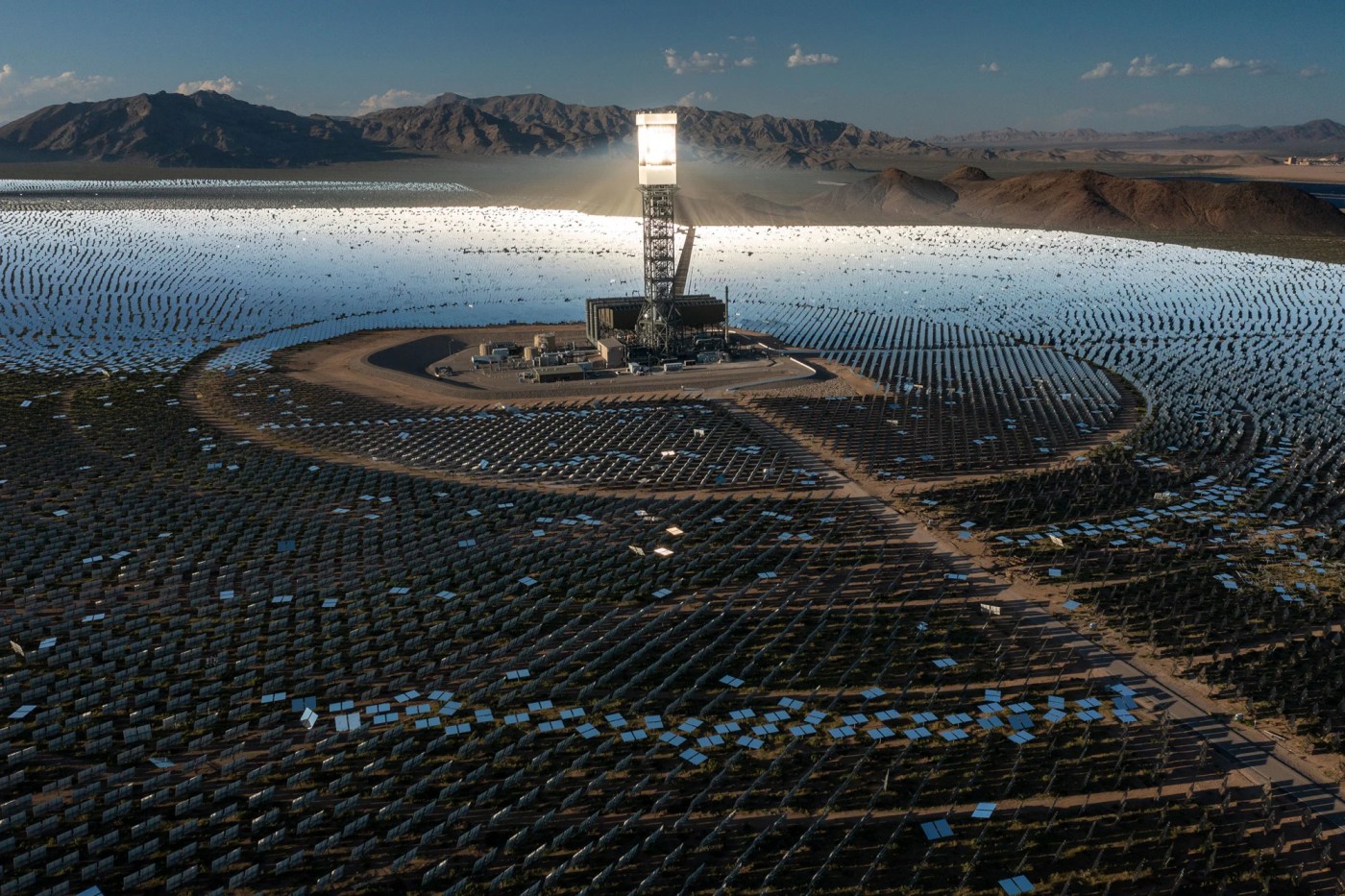By Laura Paddison | CNN
From a distance, the Ivanpah solar plant looks like a shimmering lake in the Mojave Desert. Up close, it’s a vast alien-like installation of hundreds of thousand of mirrors pointed at three towers, each taller than the Statue of Liberty.
When this plant opened near the California-Nevada border in early 2014, it was pitched as the future of solar power. Just over a decade later, it’s closing.
Related Articles
After the Moss Landing battery fire, should California limit where battery storage plants can be built?
Walters: California’s carbon crusade faces resistance due to its real world impact
Clean battery company, consumer electronics maker trim Bay Area jobs
Trump executive order may leave California offshore wind projects up in the air
California utilities commission proposes new standards for battery storage facilities
The plant’s co-owner NRG Energy announced in January it was unwinding contracts with power companies and, subject to regulatory approval, would begin closing the plant in early 2026, readying the site to potentially be repurposed for a new kind of solar energy.
For some, Ivanpah now stands as a huge, shiny monument to wasted tax dollars and environmental damage — campaign groups long criticized the plant for its impact on desert wildlife. For others, failures like this are a natural part of the race to find the winning solutions for the clean energy transition.
When Ivanpah was conceived, its technology, called concentrated solar or thermal solar, was considered a potential breakthrough.
It works like this: Hundreds of thousands of computer-controlled mirrors called “heliostats” track the sun and concentrate its rays onto three towers, each around 450 feet tall and topped with water-filled boilers. The sun’s hyper-concentrated energy turns this water to steam, which drives a turbine to create electricity.
One of the key selling points of this solar technology is the ability to store heat, allowing the production of electricity at night or when the sun isn’t shining without needing batteries.
The project got buy-in from the government with $1.6 billion in Department of Energy loan guarantees, and from utilities Pacific Gas & Electric Company and Southern California Edison, which both entered long-term agreements to buy Ivanpah’s power.
In 2014, it started commercial operations as the world’s largest solar thermal plant, spread across around 5 square miles of federal desert.
“This project is a symbol of the exciting progress we are seeing across the industry,” said then Secretary of Energy Ernest Moniz, in February 2014 during a dedication ceremony at the site.
So, where did it go wrong?
First, the technology proved finnicky and never quite worked as well as intended, said Jenny Chase, a solar analyst at BloombergNEF.
These kinds of plants “are just technically really difficult to operate,” she told CNN. They combine all the tricky, mechanical parts of a fossil fuel plant — running a turbine and maintaining many moving parts — with the challenges of a distributed energy source. The technology relies on mirrors tracking the sun exactly. “It’s really hard to get those all lined up perfectly and keep them lined up at all times,” Chase said.
But perhaps the biggest problem for Ivanpah is that photovoltaic solar — the technology used in solar panels — became really, really cheap.
In some parts of the world “you can basically buy a solar module for the price of a fence panel,” Chase said. At the time Ivanpah was built, “nobody really would have dreamed that photovoltaics would be this cheap, and batteries are doing a similar thing,” she added.
A spokesperson for NRG said prices were competitive when the power agreements were signed in 2009. But over time, advancements in other types of solar technology “led to more efficient, cost effective and flexible options for producing reliable clean energy.”
In January, NRG finalized negotiations with PG&E to terminate power purchase agreements which were supposed to end in 2039. This “will provide significant savings for California ratepayers,” the company’s spokesperson said.
A spokesperson for Southern California Edison said it was in ongoing discussions with the plant owners and the DOE about its contract.
For critics of Ivanpah, its imminent demise is proof the plant should never have been built.
It “was a financial boondoggle and environmental disaster,” said Julia Dowell, senior campaign organizer at the Sierra Club, an environmental organization. “The project’s construction destroyed irreplaceable pristine desert habitat,” she told CNN.
Ivanpahs’s location in the sweeping, sun-drenched Mojave Desert may have seemed ideal for generating solar power, but it is also a habitat for threatened desert tortoises. While the plant’s developers agreed to a series of measures to protect and relocate the animals, many environmentalists believed the plant should not have been approved.
The other big issue was bird deaths. Reports of “streamers” — birds incinerated midair by the beams of intense heat from the mirrors — solidified opposition.
NRG did not respond to specific questions about the plant’s impact on wildlife.
Some commentators are using Ivanpah to make the case that renewable energy projects should not receive government money, a view that appears to fit with the new administration’s. One of President Donald Trump’s first actions was to pause approvals of new renewable energy projects on federal land.
But renewable energy experts say it’s important for governments to invest in a range of clean technologies, and many of those they have invested in, such as photovoltaics, have worked out.
It wasn’t clear which solar technologies would prove most cost effective when Ivanpah was being built 15 years ago, said Kenneth Gillingham, an economics professor at Yale School of the Environment.
“Picking winners is extremely difficult,“ he told CNN, “and it’s not a problem that some technologies are outcompeted by others, as long as innovation continues occurring.”
The-CNN-Wire
& © 2025 Cable News Network, Inc., a Warner Bros. Discovery Company. All rights reserved.





